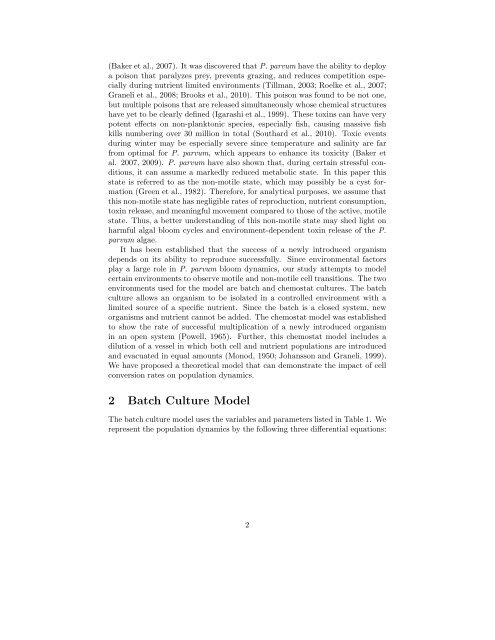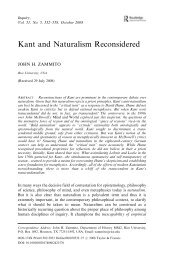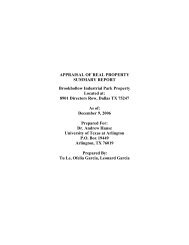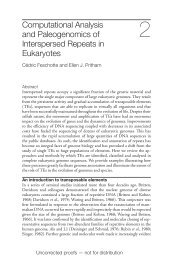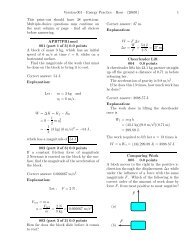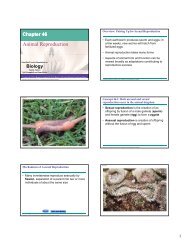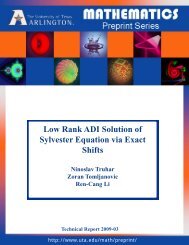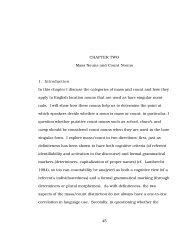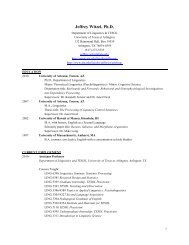Resting Stages and the Population Dynamics of Harmful Algae in ...
Resting Stages and the Population Dynamics of Harmful Algae in ...
Resting Stages and the Population Dynamics of Harmful Algae in ...
- No tags were found...
You also want an ePaper? Increase the reach of your titles
YUMPU automatically turns print PDFs into web optimized ePapers that Google loves.
(Baker et al., 2007). It was discoveredthat P. parvum have <strong>the</strong> ability to deploya poison that paralyzes prey, prevents graz<strong>in</strong>g, <strong>and</strong> reduces competition especiallydur<strong>in</strong>g nutrient limited environments (Tillman, 2003; Roelke et al., 2007;Graneli et al., 2008; Brooks et al., 2010). This poison was found to be not one,but multiple poisons that are released simultaneously whose chemical structureshave yet to be clearly def<strong>in</strong>ed (Igarashi et al., 1999). These tox<strong>in</strong>s can have verypotent effects on non-planktonic species, especially fish, caus<strong>in</strong>g massive fishkills number<strong>in</strong>g over 30 million <strong>in</strong> total (Southard et al., 2010). Toxic eventsdur<strong>in</strong>g w<strong>in</strong>ter may be especially severe s<strong>in</strong>ce temperature <strong>and</strong> sal<strong>in</strong>ity are farfrom optimal for P. parvum, which appears to enhance its toxicity (Baker etal. 2007, 2009). P. parvum have also shown that, dur<strong>in</strong>g certa<strong>in</strong> stressful conditions,it can assume a markedly reduced metabolic state. In this paper thisstate is referred to as <strong>the</strong> non-motile state, which may possibly be a cyst formation(Green et al., 1982). Therefore, for analytical purposes, we assume thatthis non-motile state has negligible rates <strong>of</strong> reproduction, nutrient consumption,tox<strong>in</strong> release, <strong>and</strong> mean<strong>in</strong>gful movement compared to those <strong>of</strong> <strong>the</strong> active, motilestate. Thus, a better underst<strong>and</strong><strong>in</strong>g <strong>of</strong> this non-motile state may shed light onharmful algal bloom cycles <strong>and</strong> environment-dependent tox<strong>in</strong> release <strong>of</strong> <strong>the</strong> P.parvum algae.It has been established that <strong>the</strong> success <strong>of</strong> a newly <strong>in</strong>troduced organismdepends on its ability to reproduce successfully. S<strong>in</strong>ce environmental factorsplay a large role <strong>in</strong> P. parvum bloom dynamics, our study attempts to modelcerta<strong>in</strong> environments to observe motile <strong>and</strong> non-motile cell transitions. The twoenvironments used for <strong>the</strong> model are batch <strong>and</strong> chemostat cultures. The batchculture allows an organism to be isolated <strong>in</strong> a controlled environment with alimited source <strong>of</strong> a specific nutrient. S<strong>in</strong>ce <strong>the</strong> batch is a closed system, neworganisms <strong>and</strong> nutrient cannot be added. The chemostat model was establishedto show <strong>the</strong> rate <strong>of</strong> successful multiplication <strong>of</strong> a newly <strong>in</strong>troduced organism<strong>in</strong> an open system (Powell, 1965). Fur<strong>the</strong>r, this chemostat model <strong>in</strong>cludes adilution <strong>of</strong> a vessel <strong>in</strong> which both cell <strong>and</strong> nutrient populations are <strong>in</strong>troduced<strong>and</strong> evacuated <strong>in</strong> equal amounts (Monod, 1950; Johansson <strong>and</strong> Graneli, 1999).We have proposed a <strong>the</strong>oretical model that can demonstrate <strong>the</strong> impact <strong>of</strong> cellconversion rates on population dynamics.2 Batch Culture ModelThe batchculture model uses<strong>the</strong> variables<strong>and</strong> parameterslisted <strong>in</strong> Table1. Werepresent <strong>the</strong> population dynamics by <strong>the</strong> follow<strong>in</strong>g three differential equations:2


